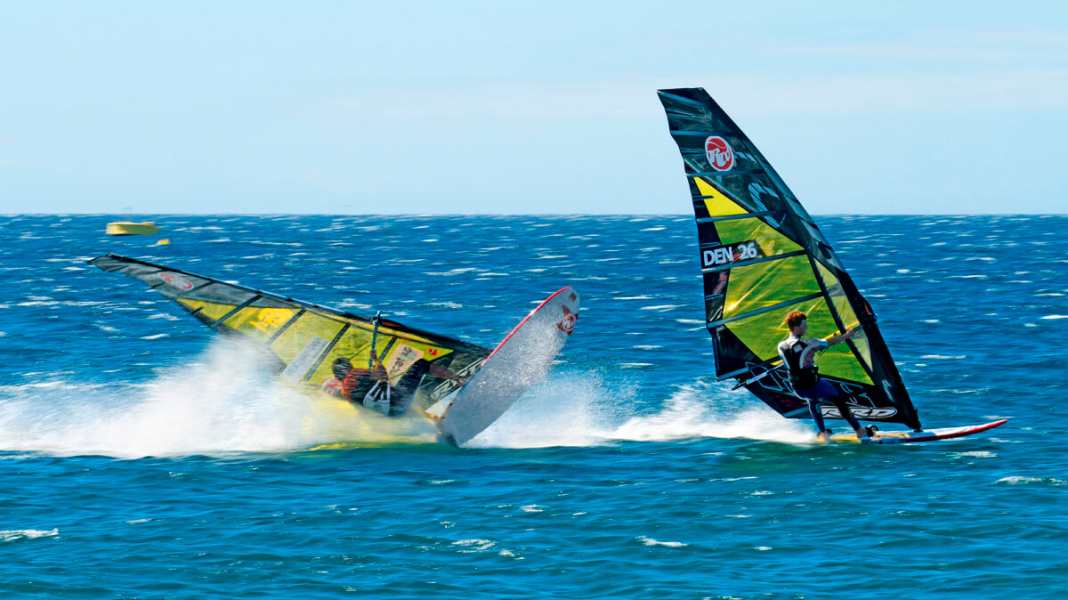
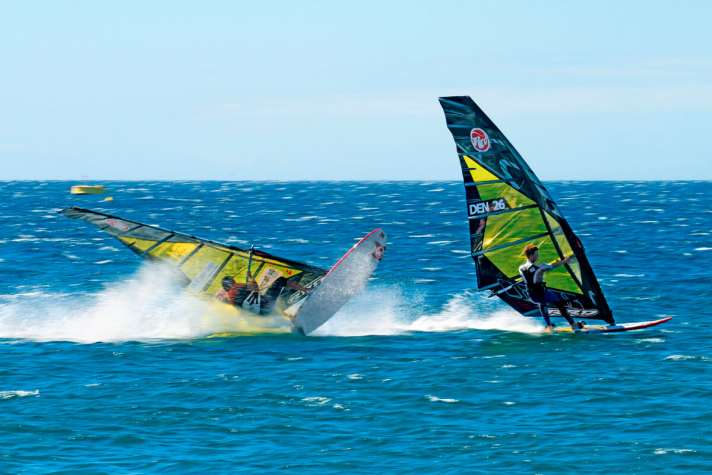
In the first part of my workshop, I showed you how to optimise yourself and your equipment for early planing, this time we'll look at the other end of the flagpole. Whether you're an ambitious hobby racer (who just likes to beat up his mates on the lake), are chasing personal records with a GPS on your arm or want to tune your equipment for your first regattas - if you surf in a controlled manner, you'll surf faster and save energy to boot.
1. pressure on the back leg As the wind increases, the pressure on the back leg increases, the board starts to become unsteady and, in the worst case, the increasing pressure results in a "wheelie", i.e. the unintended rise of the board nose.
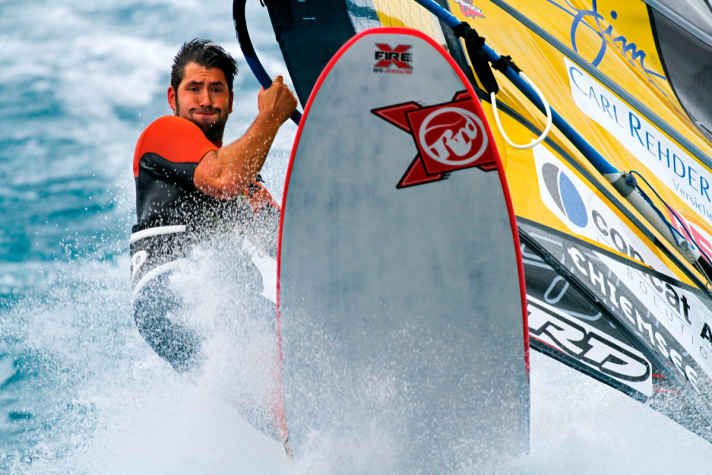
1. The main remedy is a fin with less surface area or less lift (also known as a lift). The fin does not have to be shorter, often a softer fin or a fin with a thinner profile is sufficient.
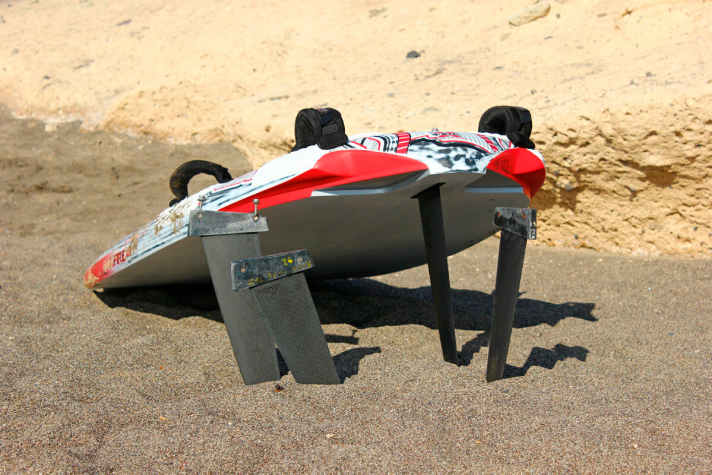
2. Changing the sail trim also helps here (see pressure point migration), because more luff tension means less sail pressure, which makes the whole board-rigging system easier. 3. The height of the fork also plays a role.
Vincent's TIP:Move the fork two centimetres downwards to take pressure off the back leg.
2. pressure point migration Everyone knows it and everyone hates it! The stronger the wind, the more the pressure point of the sail shifts backwards. In extreme gusts, the sail even becomes "windward" and you suddenly have to pull with the sail hand while the mast comes towards you at the front - which often results in a nasty fall. 1.This can also be remedied by increasing the luff tension, as this opens up the sail top, which allows wind to escape and thus reduces the active sail area. 2.More luff tension flattens the profile and the wind leading edge. This also reduces the sail pressure and the active pull forwards. But beware: more luff tension and a flatter profile also changes the boom setting! If you set the sail further at the luff, you will normally also have to trim the boom slightly! Vincent's TIP:Many sails offer two clew eyelets as an option. In strong winds, I always take the lower one, as the sail can then twist a little more freely in the leech (i.e. open up) and thus release steam better.
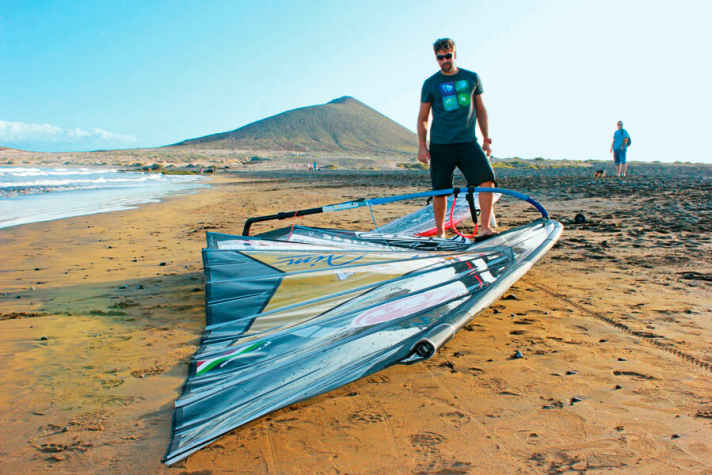
3. top load with risk of skidding If the wind picks up, the power of the sail often builds up in the top and the rig feels heavy and top-heavy. You notice this when the nose of the board is constantly pressed onto the water, especially when sailing downwind, and starts to chop instead of flying freely over it. The result is a large wetted surface (a lot of water friction), which causes skidding crashes at the slightest error. The same applies here: more is more! A lot of luff tension and loose leech opens up the sail in the top, so that the pressure point comes down and the sail feels lighter in the top. The board rides more freely and faster. Vincent's TIP: Rigged with a lot of loose leech, it is important to tension the boom only moderately. The sail should be allowed to touch the boom. This makes it more stable and smoother in the hand.
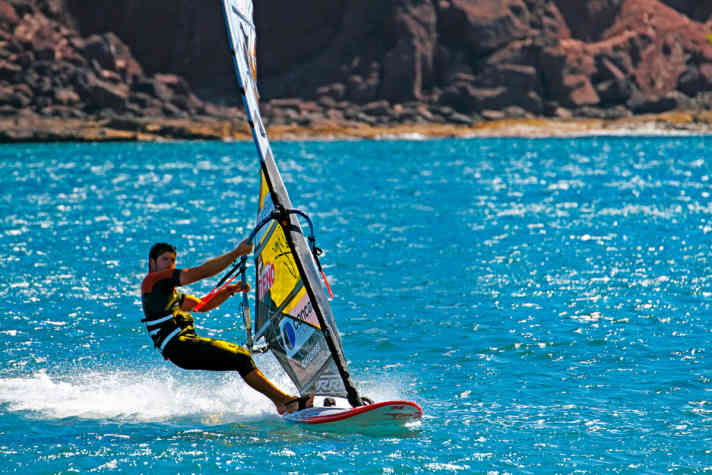
4. mast base position The mast foot position is important in all conditions. A simple rule is: If the wind increases and control decreases, the mast foot must be moved further forwards. Vincent's TIP: In the normal wind range, you are on the safe side with the centre position; in hack, move the mast base two centimetres forwards.
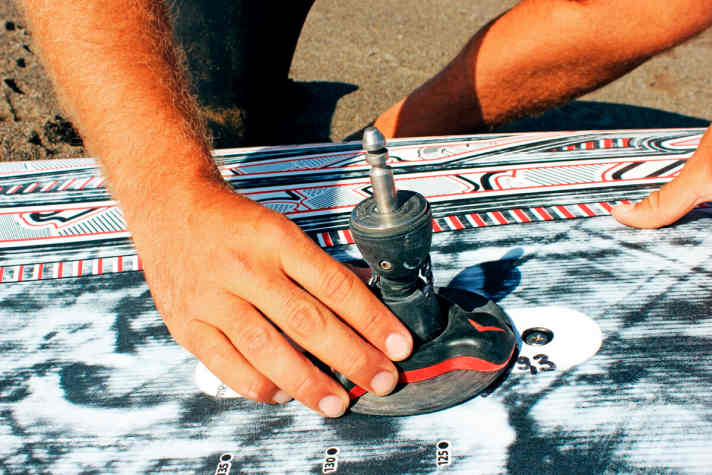
5. trapeze ramp length & posture Super important topic! Long ropes give you much more control. The body and therefore the centre of gravity is further away from the sail, so that you have more time to react to chop or incoming gusts. You can stick your bum out, which has the positive effect of enabling good horizontal power transfer from the legs to the board and moving the centre of gravity further outwards. With short harness ramps, you automatically have a more stretched posture, which is not conducive to maximum control. Vincent's TIP:Vario trapeze ropes! I use 28 to 34 cm long and can cover all wind conditions.
6. boom height If the wind increases and control decreases, push the fork down. The board becomes much calmer. This also helps in very choppy water. Vincent's TIPA two centimetre downward shift in the fork is clearly noticeable even for amateurs!
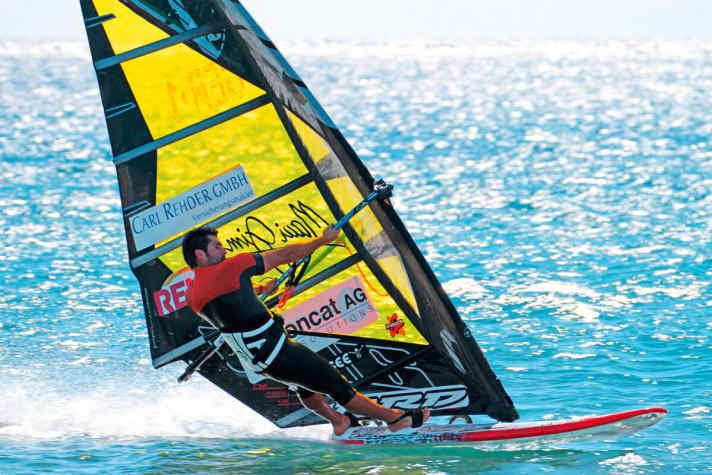
7. loop positions If the wind picks up, my tip is to make changes to the sail trim, the fins and the mast foot position rather than starting to adjust the straps straight away. Freeride and freerace boards often offer strap options that are offset further out. If you no longer have any problems getting into the straps, mount the straps a little further out, this will massively improve control.
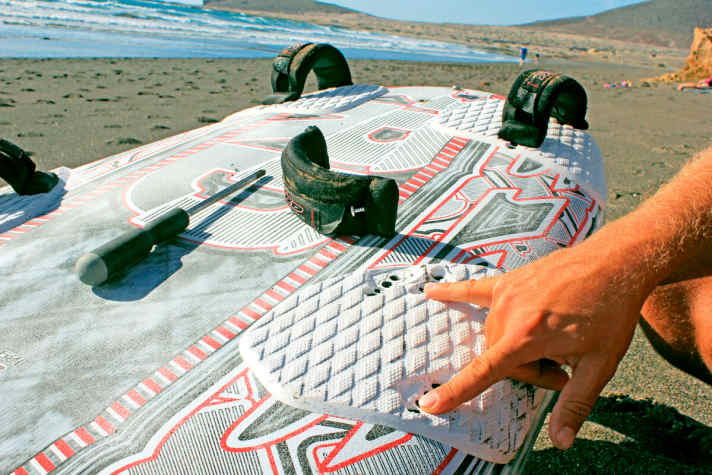
If you often ride in the overpowered area or a slalom race in strong winds, it makes sense to have as wide a stance as possible on the board.
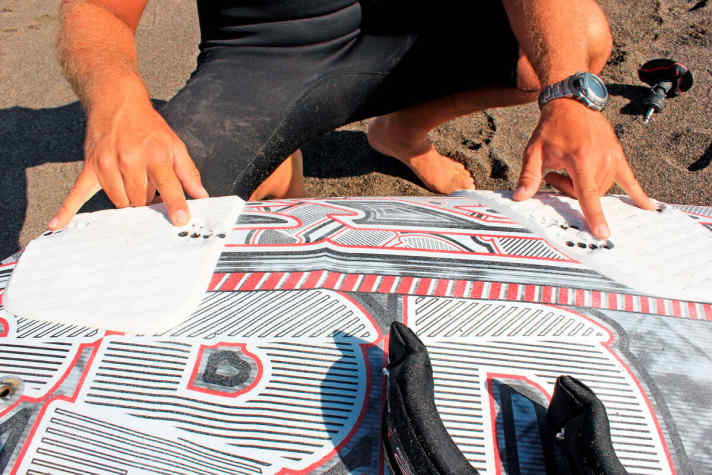
Vincent's TIP: Front loop to the front, rear loop all the way to the back!
Here you can find the workshop with Vincent Langer on the topic Glide earlier
7 Loop positions If the wind picks up, my tip is to make changes to the sail trim, the fins and the mast foot position rather than starting to adjust the loops straight away. Freeride and freerace boards often offer strap options that are moved further out (7). If you no longer have any problems getting into the straps, mount the straps a little further out, this will massively improve control. If you often ride in the overpowered area or a slalom race in strong winds, it makes sense to have as wide a stance as possible on the board (8). Vincent's TIP: Front strap forwards, rear strap all the way back! 7 Loop positions If the wind picks up, my tip is to make changes to the sail trim, the fins and the mast foot position rather than immediately starting to adjust the loops. Freeride and freerace boards often offer strap options that are moved further out (7). If you no longer have any problems getting into the straps, mount the straps a little further out, this will massively improve control. If you often ride in the overpowered area or a slalom race in strong winds, it makes sense to have as wide a stance as possible on the board (8). Vincent's TIP: Front strap forwards, rear strap all the way back! 7 Loop positions If the wind picks up, my tip is to make changes to the sail trim, the fins and the mast foot position rather than immediately starting to adjust the loops. Freeride and freerace boards often offer strap options that are moved further out (7). If you no longer have any problems getting into the straps, mount the straps a little further out, this will massively improve control. If you often ride in the overpowered area or a slalom race in strong winds, it makes sense to have as wide a stance as possible on the board (8). Vincent's TIP: Front strap forwards, rear strap all the way back! 6. boom height
If the wind increases and control decreases, push the fork down (6). The board becomes much calmer. This also helps in very choppy water.
Vincent's TIP: A fork that is two centimetres lower can be clearly felt even by amateurs!

